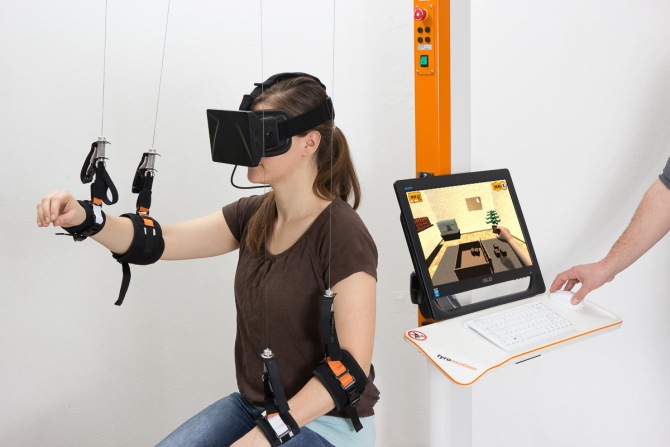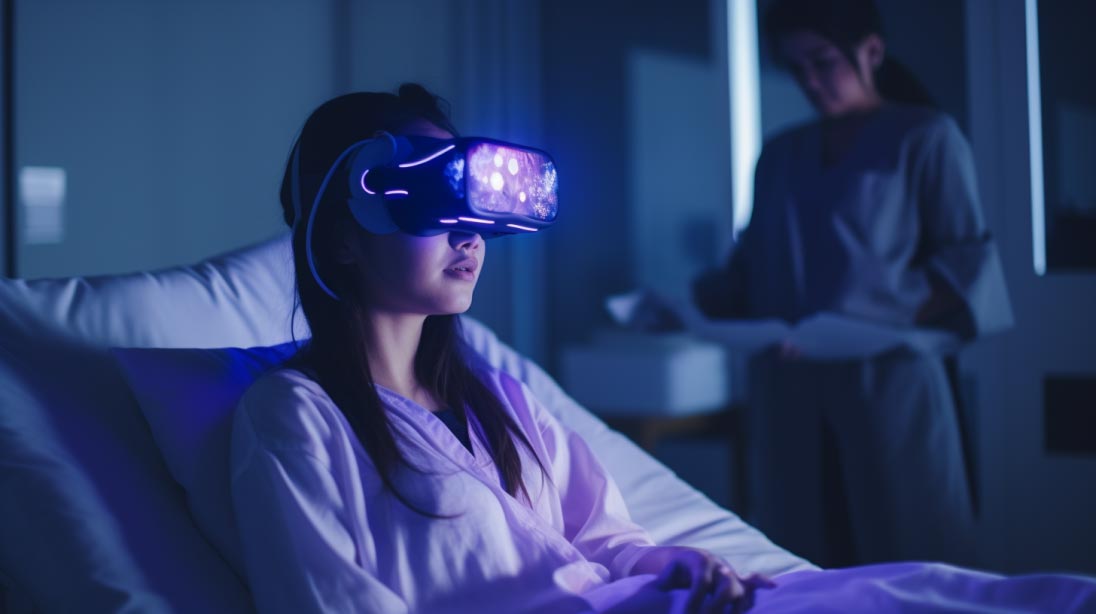Introduction to Virtual Reality Therapy

Imagine stepping into a world where your fears, anxieties, and emotional struggles can be confronted head-on in a safe environment. Welcome to the realm of virtual reality therapy—a groundbreaking approach that blends technology with mental health treatment. As virtual reality (VR) continues to evolve, its application in therapeutic settings is gaining momentum. This innovative method offers exciting possibilities for individuals seeking relief from various psychological challenges. But what are the benefits and challenges associated with this cutting-edge form of therapy? Let’s dive deeper into how VR is transforming the landscape of mental health care.
Types of Virtual Reality Therapies

Virtual reality therapy encompasses various approaches tailored to meet different therapeutic needs. One popular type is exposure therapy, where patients confront phobias or anxiety triggers in a controlled virtual environment. This method allows for gradual desensitization without real-world risks.
Another approach is cognitive behavioral therapy (CBT) using VR settings to simulate scenarios that challenge negative thought patterns. Patients can practice coping strategies within these immersive experiences.
Additionally, virtual reality can aid in rehabilitation therapies, such as helping stroke survivors regain motor skills through gamified tasks. These engaging activities motivate patients and enhance their commitment to recovery.
Mindfulness and relaxation techniques also find a home in virtual spaces, offering calming environments that promote emotional well-being. By selecting the right type of VR therapy, therapists can provide personalized treatments tailored to individual patient needs.
Advantages of Using VR in Therapy

Virtual reality in therapy offers a transformative approach to mental health care. One significant advantage is its ability to create immersive environments that can mimic real-life situations. This controlled setting allows therapists to expose clients gradually to their fears or triggers, facilitating desensitization.
Another benefit lies in accessibility and convenience. With VR, patients can engage with therapeutic experiences from the comfort of their homes. This flexibility encourages consistent participation and often leads to better outcomes.
Additionally, VR provides instant feedback for both therapists and clients. They can analyze reactions in real-time, adjusting methods on the fly for maximum effectiveness.
Moreover, it opens doors for creativity in treatment plans. Therapists can design tailored experiences that address individual needs more precisely than traditional approaches allow, making therapy feel less intimidating and more engaging.
This technology fosters heightened engagement by immersing users in unique scenarios they might not encounter otherwise during standard sessions.
Addressing the Challenges of VR in Therapy
While the benefits of virtual reality in therapy are promising, several challenges need addressing. One major hurdle is accessibility. Not everyone can afford the necessary equipment or has access to high-speed internet.
Additionally, there’s a learning curve for both therapists and clients. Some individuals may find VR technology intimidating or difficult to navigate initially. This could hinder their engagement during sessions.
Privacy concerns also arise when using VR platforms that collect user data. Ensuring confidentiality is vital for maintaining trust between therapist and client.
Moreover, not all mental health conditions respond equally to virtual interventions. Tailoring experiences requires careful consideration and ongoing research into best practices.
Training professionals on how to effectively integrate VR into traditional therapy remains crucial as well. As this field evolves, continuous education will help maximize its potential while minimizing risks.
Success Stories: Real-Life Examples of VR Therapy’s Impact
One compelling success story comes from a young woman battling severe anxiety. She began using VR therapy to confront her fears in a controlled environment. Gradually, she faced social situations that once felt overwhelming. With each session, her confidence blossomed.
Another inspiring case involves veterans dealing with PTSD. A program utilizing VR simulations allowed them to relive and process traumatic experiences safely. Many participants reported significant reductions in flashbacks and heightened emotional well-being after just a few weeks.
Children with autism have also benefited tremendously from VR therapy. By immersing them in social scenarios, therapists can help these kids practice communication skills without the pressure of real-life interactions.
These examples highlight how virtual reality is transforming lives, providing new pathways for healing that were once unimaginable. The impact of VR continues to grow as more individuals experience its benefits firsthand.
Future Possibilities and Innovations in VR Therapy
The future of VR therapy is brimming with possibilities. As technology advances, we can expect more immersive and personalized experiences tailored to individual needs.
Imagine a world where AI-driven avatars guide patients through therapeutic scenarios, adjusting in real-time based on emotional responses. This could enhance engagement and effectiveness.
Moreover, advancements in haptic feedback technology may allow users to physically interact with virtual environments. Such interactions could create deeper connections during therapy sessions.
Collaboration between mental health professionals and tech developers will pave the way for innovative applications. From exposure therapy for phobias to stress management techniques, the potential is vast.
Integration with wearable devices might provide valuable data on physiological responses during sessions. Therapists would gain insights that inform treatment strategies tailored specifically for each patient’s journey.
As research continues to unfold, we stand at the brink of a new era in mental health care, one where virtual reality plays an integral role in healing minds.
Conclusion: The Potential of Virtual Reality in Revolutionizing Mental Health Treatment
Virtual reality holds immense potential to transform mental health treatment. By immersing individuals in controlled environments, therapists can address various psychological issues more effectively than with traditional methods. The unique ability of VR to simulate real-world scenarios allows for gradual exposure therapy and skill-building in a safe space.
As technology continues to evolve, so does the capacity for virtual reality applications in therapy. Researchers are exploring new ways to enhance user experience and improve therapeutic outcomes. With ongoing advancements, we may see even more tailored programs that cater specifically to individual needs.
The benefits of incorporating VR into mental health care are significant. Patients often find it easier to engage with their treatment when immersed in a stimulating environment that feels less clinical than conventional settings. This engagement can lead to better adherence and improved results over time.
While there are challenges—such as accessibility, cost, and the necessity for trained professionals—the future remains bright for VR therapy. As awareness grows about its capabilities and successes continue emerging from clinical studies, it’s likely that virtual reality will become an integral part of modern psychological practices.
The journey toward widespread acceptance may still have hurdles ahead, but the path is illuminated by promising innovations ready to reshape how we approach mental wellness through cutting-edge technology.










